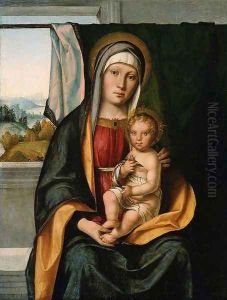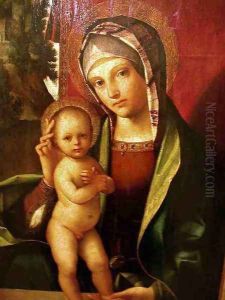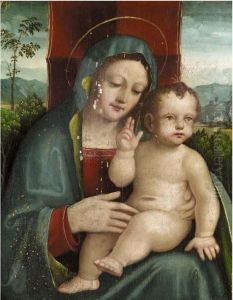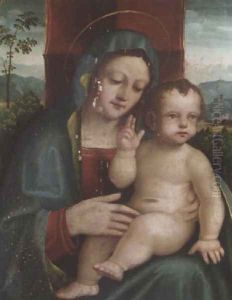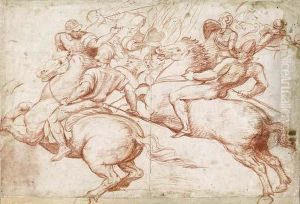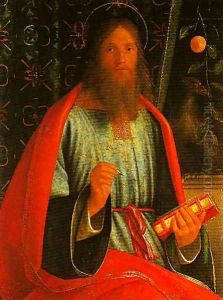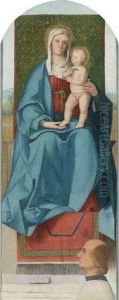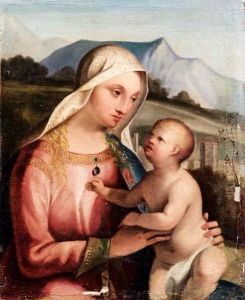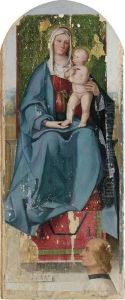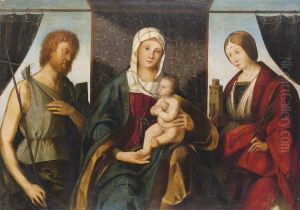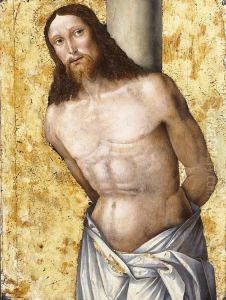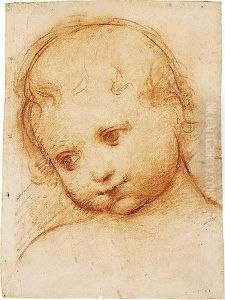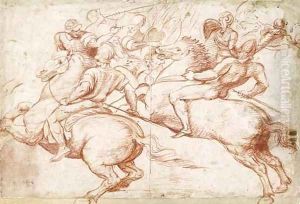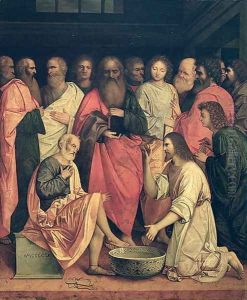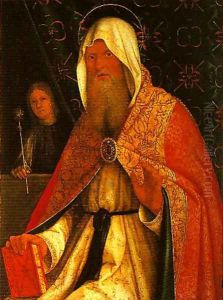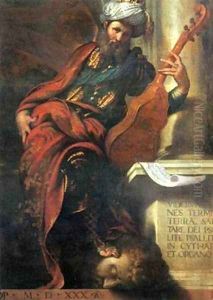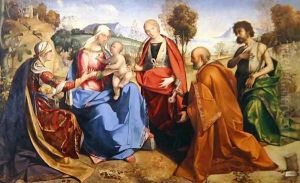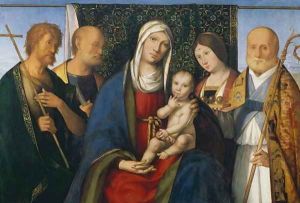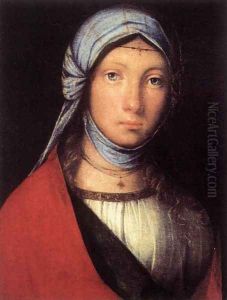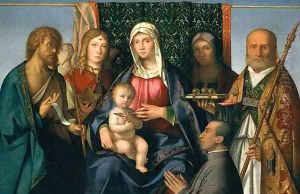Boccaccio Boccaccino Paintings
Boccaccio Boccaccino was an Italian painter of the Renaissance period, active mainly in Cremona and regions of Lombardy. He was born around 1466, although the exact date and place of his birth are not documented. Boccaccino's style is characterized by its combination of Venetian colorism with the monumentality of the Roman school, indicative of the transitional nature of the art of the period.
Boccaccino's early life and training remain obscure, but his work suggests that he may have been influenced by the Venetian school, perhaps through direct contact with artists like Giovanni Bellini. His career began to gain prominence in the late 15th century when he started receiving commissions for altarpieces and fresco cycles.
One of his most notable works is the fresco cycle in the Cathedral of Cremona, which he began around 1506 and depicts scenes from the life of the Virgin Mary. These frescoes showcase his mastery of color and composition, and they remain an important example of Lombard art of the time. His other works include the 'Madonna and Child' and 'Saint Sebastian.'
Boccaccino was also known for his portraits, though few have survived. His contributions to the development of Renaissance art in northern Italy were significant, particularly in the blending of Lombard and Venetian elements, a synthesis that would influence later artists in the region.
Though not as widely recognized as some of his contemporaries, Boccaccino's work has been appreciated for its beauty and technical skill. His death is believed to have occurred around 1525, and his legacy is preserved in the artworks that continue to be studied and admired for their historical and aesthetic value.
